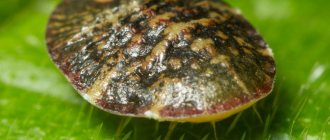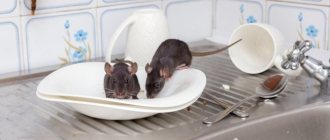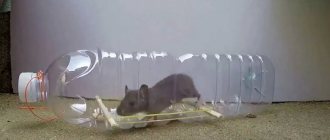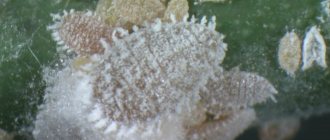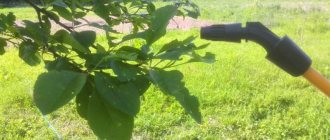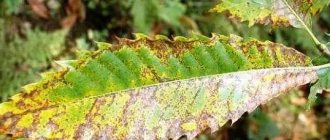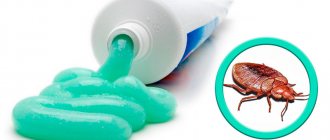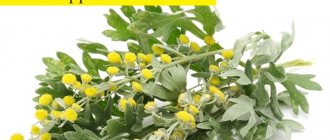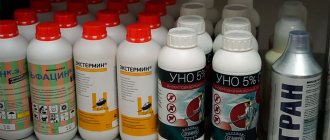If a mealybug appears on a dracaena tree, you should immediately take measures to save your tropical pet. This parasite is recognized as one of the most dangerous for garden and indoor plants. The scale insect will not voluntarily leave its chosen territory and will drink the juices from the flower until it turns it into an arid herbarium.
How to deal with the pest?
A mild mealybug infestation can be dealt with relatively quickly.
Usually it is enough to clean the plant with a cotton swab or a soft brush dipped in dissolved soap. After removing the pests and their white secretions, you need to spray with green soap, infusion or, repeating it three times with an interval of one week. A good result is also obtained from treatment with alcohol or tincture purchased at the pharmacy. Instead of repeated spraying, it is permissible to remove pests with a cotton swab or paper towel soaked in one of these preparations. Both must be destroyed immediately after the procedure is completed to avoid the spread of surviving insects.
From folk remedies
, which are easy to prepare at home, the following can be recommended for spraying:
1. Soap-alcohol mixture:
Crushed soap – 1 teaspoon; – vodka – 2 tablespoons; – water – 1 liter.
Vodka can be replaced with one teaspoon of pure alcohol. Dissolve the soap in a small amount of hot water, add up to a liter and add vodka or alcohol. Spray the entire plant with the resulting mixture, avoiding its contact with the substrate. After a day, be sure to rinse off using warm water. Repeat after three or four days.
2. Garlic solution:
Garlic – 25 grams; – water – 1 liter.
Mash the garlic and pour boiling water over it. Let it brew for six hours, then strain and apply for spraying.
3. Tincture of orange peels: pour a small amount of dry or fresh peels with hot water and leave for two to three days. Spray at intervals of several days.
Chemicals
to fight scale insects
If the mealybug infestation is severe, washing and removing the pests by hand alone is no longer sufficient. Chemical treatments will have to be used. Since the mealybug is a sucking insect, contact and combined action drugs will be the most effective to combat it.
1. Aktara
– a popular insecticide with enteric contact action. The active substance is thiamethoxam.
2. Aktellik
– organophosphorus non-systemic insectoacaricide. The active ingredient is pirimiphos-methyl. The drug is highly toxic and not suitable for use in residential areas.
3. Bankol
– contact-intestinal insecticide. Its active ingredient is bensultap.
4. Biotlin
– contact-intestinal insecticide. It is based on a rather dangerous substance – imidacloprid.
5. Vertimek
– a non-systemic insectoacaricide of biological origin. The active ingredient is abamectin.
6. Spark “Double Effect”
– a drug based on pyrethroids, which are considered not dangerous for warm-blooded animals and humans. Contains cypermethrin and permethrin. Has an intestinal contact effect.
7. Calypso
is a systemic drug belonging to the chloronicotinyl class. It has both a contact and pronounced intestinal effect.
8. Confidor-Extra
– a systemic drug based on imidacloprid.
9. Tanrek
– a broad-spectrum drug based on imidacloprid.
10. Fitoverm
– biological insectoacaricide of intestinal and contact action. The main substance is aversectin.
11. Admiral
– hormonal insecticide of contact-intestinal action. The main substance is pyriproxyfen.
Of the purely biological agents against mealybugs, you can use Lepidocide
.
Mealybug
– one of the most dangerous pests that harm indoor plants. A sucking insect that grows up to five millimeters in length. It mainly damages young shoots and leaf axils, and if the plant is massively damaged, it also damages the leaves. There are both winged and wingless specimens. The second has an oval-elongated flesh-colored body, there are bristles at the edges, and the body itself is covered with a white powdery coating. Winged specimens have only one pair of wings.
A female mealybug can lay up to two thousand eggs along the veins, in leaf axils and on the underside of the leaf blade, which are not afraid of water, because. have protection in the form of pubescence. The larvae colonize the entire plant, right down to the roots of the plant, and have the ability to move throughout their lives. All types of scale insects secrete a sticky liquid on which sooty fungus settles. The leaves of the affected plants begin to turn yellow and fall off, the shoots stop growing, the plant weakens and dies. Pests can accumulate under the bark or under the bulb scales, which makes it difficult to find the pest.
Methods for controlling mealybugs
If single individuals are found, they are removed using tweezers, and the leaves and the window sill on which the plants are located are treated with a soap-vodka solution. To prepare it, a teaspoon of crushed laundry or green soap is dissolved in hot water. Then bring the volume to 1 liter and add a tablespoon of medical alcohol. Having previously covered the substrate in the flowerpot, spray the dracaena with a spray bottle. Regular visual inspections are carried out throughout the month to ensure that there are no offspring.
If the number of mealybugs exceeds 10, dracaena needs treatment. All visible individuals are removed using a toothpick, a cotton swab, tweezers, and the plant itself is treated with a chemical. The following products are used to treat leaves and stems:
- "Aktellik" - destroys pests in one procedure. The drug is toxic, so do not neglect personal protective equipment.
- "Aktara" - used for soil application and foliar spraying. To completely get rid of insects, 2 treatments are necessary.
- "Intavir" is a drug with enteric contact action.
“Tsvetofos”, “Fosbecis”, “Decis”, “Fitoverm”, “Confidor” are also used. “Talstar”, “Bazudin”, “Arrivo” are used for soil cultivation.
Important! Before using the drug, a test should be carried out to determine the plant's sensitivity to the product. To do this, treat one leaf and observe the reaction of the dracaena for 1-2 days. Many insecticides are toxic to people, so treatment is carried out in a well-ventilated area, or outdoors, wearing rubber gloves.
Treatment of dracaena from mealybug involves 2-3 treatments. The drugs do not have an ovicidal effect - they do not have a detrimental effect on pest eggs. Therefore, after 7-10 days, in order to destroy new offspring, the procedure is repeated.
Why do they grow on indoor plants?
A favorable environment for the appearance of a pest is:
- excessively dry air;
- application of contaminated soil
; - excess nitrogen fertilizers;
- lack of hygiene procedures.
The infected specimen begins to wither and lose leaves, it takes on a depressed appearance. Upon careful examination, you can find small white fluffy lumps on the leaves.
How to deal with a pest
Before fighting harmful insects, the infected flower should be isolated from the rest.
. Scale insects can also move to neighboring flowers, so they should be inspected regularly.
The affected areas are treated with a soap solution in which a cotton swab is moistened. All affected areas should be thoroughly wiped. If the sheet is severely damaged, it is better to remove it. Treatment with alcohol is also harmful to the insect.
Mealybugs love dry, hot microclimates. Having created such conditions, they can be lured out of hard-to-reach places and removed. Males do not feed on the flower, but contribute to the reproduction of pests, so they also need to be fought.
Males are harder to spot
, because they are found in the soil near the flower. Traps are set up for them in the form of sticky tape, which is fixed near the light source.
After the leaves and stems have been thoroughly washed, they are treated with insecticides.
To do this, poisons are used in different forms:
- spray;
- sprayers;
- granules;
- sticks;
- oils
Sprays are sprayed from a certain distance so as not to harm the pet
The granules are placed in the soil, being careful to protect the roots
Oils are applied to damaged areas. Healthy leaves do not need to be lubricated; this may disrupt the metabolic process.
Spraying is carried out with the following preparations:
- Aktara;
- Calypso;
- Confidor;
- Tanrek;
- Fitoverm.
We described in detail the procedure for using the latter in the article.
There are other effective drugs
to treat affected pets.
Before you start using this or that product, you should read the instructions to avoid harm to the plant.
As an additional means, you can choose one of the traditional methods of pest control:
- treat
the affected areas
with infusion of fragrant tobacco
; - wipe with calendula tincture (can be purchased at a pharmacy);
- treat with garlic infusion (cut 5 cloves and pour liters of boiling water over the floor, leave to infuse for 4 hours).
You can use microbiological preparations, in particular lepidocide
.
Folk recipes
Most flower growers are skeptical about the use of folk remedies, considering them ineffective against the pest. However, in the early stages of infection, they can help in the fight against harmful insects.
How to get rid of mealybugs on dracaena:
- Mix 1-2 teaspoons of any antiparasitic shampoo for cats or dogs based on permethrin with 5 liters of water and spray the leaves and stem.
- To prepare the garlic solution, chop 5 cloves of garlic, pour in a liter of boiling water and leave for 3-4 hours. Strain the finished mixture and apply it to all parts of the plant using a brush or cotton wool.
- Pour 50 g of citrus peels into a liter of warm water. After the solution has infused for 24 hours, pour it into a spray bottle and spray the dracaena.
- Use calendula tincture to wipe infected areas. It is important that the plant is not exposed to the sun at this moment. If there is no ready-made tincture, pour 100 g of dried flowers with a liter of water and leave for at least a day.
- In case of root mealybugs, replanting the plant helps a lot. The soil and pot are pre-disinfected. The plant itself is carefully removed from the soil and the roots are placed in a container with water at 55°C for 15-20 minutes.
Important! When treating dracaena from mealybugs, it is isolated in a separate place. All nearby plants are regularly inspected with a magnifying glass and treated if necessary.
Signs you have a mealybug
reverse side
Since the mealybug sucks nutrients from the leaves, the leaves may be deformed, and the plant itself is greatly inhibited in growth.
It is necessary to look for mealybugs not only on the leaves, but also in the root system. As it turns out, it does well in pots too. That’s why I’ve recently fallen in love with transparent pots, because you’re less likely to miss some “uninvited guest.”
First, I cleaned all the leaves of plaque and insects using a cotton pad soaked in a solution of green soap. The soap remaining on the foliage and stems will help the active drug linger on the green part of the plant, rather than safely forming a droplet and draining from the leaf. Since I did not have time to wait for further manifestations of the mealybug, the next day I treated it with Fitoverm. There are a lot of drugs that are recommended for mealybugs, but I have been using Fitoverm for a long time, since it gives positive results for me.
I make a fairly strong solution: 2 ml of the drug per 200 ml of water for spraying and watering. First, I thoroughly irrigate the plants, and then pour them at the root. If possible, it is better to change the soil of the infected plant, since I had a recently purchased plant and I was going to change the soil and pot anyway, so I immediately did this. I bake the soil for all my plants in the oven so that when I change the soil, I don’t get any other pests. I even carefully cultivate the store soil.
I washed the roots with Fitoverm and thoroughly sprayed the green part of the plant. The treated plant can be left in quarantine for a week, and after a break the treatment can be repeated.
The waxy coating makes mealybugs very difficult to kill. Therefore, the poison will only affect young individuals. Adults will have to be removed manually. Because of this feature, the treatment can be repeated two to five times!
Causes of infection
Mealybugs most often appear where plant conditions are disturbed and basic agrotechnical measures are not carried out correctly.
It is more difficult to get rid of a pest if the following conditions are not met:
- The watering schedule has been disrupted. Drying out and waterlogging are equally harmful.
- The location of the plant is incorrectly chosen: too little lighting, insufficient humidity.
- Temperature conditions are too low for this crop.
- Violation of general hygiene rules for care: untimely clearing, removal of weeds and damaged parts.
Insecticides to help the gardener
In search of how to get rid of a parasitic insect, they resort to the help of “chemistry”. Before using this or that substance, you need to reliably make sure that the pest is really a mealybug. A photo of this particular insect will help identify the parasite.
Pest control, especially at an advanced stage of plant damage, will be most successful with the use of combined-action chemicals that kill not only adult insects, but also egg laying and larvae. These are so-called insecticides (systemic). The drugs are able to penetrate inside the plant. Moving along the canal system, they reach its top and roots. Therefore, wherever the mealybug is, it will begin to feed on the poisoned juice and then die.
Mealybugs in the roots can only be destroyed with chemicals
White, fluffy, shaggy, wet new growths on ficus benjamina are sprayed with Mosplan. You can use Actelik, characterized by enteric contact action. Each instant mixture must be prepared following the instructions included in the instructions. On dracaena, continue treatment at intervals of 4 days until the scale insect is completely destroyed.
To treat decorative floral greens, you can alternately use Fazalon and Fitoverm for mealybugs. The latest preparation of the biological series of IV generation insecticides. They can cure diseases of orchids caused not only by scale insects, but also by aphids, as well as other harmful organisms.
A number of chemical reagents are supplemented by Mospilan, Konfidor-maxi, Ponche. They are diluted simply: 1 g of substance per 1000 ml of water. The plants are not watered too much with these solutions. To prevent the pest from getting used to one poison, watering is repeated after 7 days, but with Spirotetramat or Aplaud (from a series of new drugs). The time of exposure of the mealybug to different chemicals differs. But, ultimately, the dried bodies of killed insects are always found on the ground in a flower pot.
Causes of the pest
Optimal conditions for the development and reproduction of insects: high indoor humidity and air temperature within 25°C. Spring and autumn are accompanied by a peak in mealybug activity; during these periods their numbers are especially high.
Transplanting into contaminated soil or taking the plant outside increases the chances of the flower becoming infected. But still, predominantly, the main factors influencing the development of the mealybug population on dracaena are errors in care:
- excess or deficiency of moisture;
- incorrect choice of plant location, inappropriate temperature conditions, high humidity in the room;
- lack of regular water procedures, inattentive inspection of the flower to identify insects, untimely removal of dead fragments and diseased leaves;
- ignoring quarantine measures after purchasing a new plant.
On a note! Insufficient attention to soil disinfection is the reason for the appearance of many pests on indoor plants. Before transplanting the dracaena into new soil, the soil is kept in the freezer or treated with boiling water and a 1% manganese solution. When using an old flower pot, the container also needs to be disinfected.
Fighting with chemicals
When the early stage is missed, and the invasion of harmful insects already threatens with disastrous consequences, then you have to fight using chemicals.
Affected indoor flowers and fruit and berry bushes need to be treated more than once at intervals of several days. The drugs that pests fear work in three directions:
- Systemic ones poison the juice without causing harm to the plant itself (Phosfamide, Rogor, Mospilan).
- Intestinal ones cause poisoning and digestive disorders (Aktellik, Akarin, Fitoverm, Nurell-D, Aktara).
- Contact ones act on the skin. Such drugs are used once (Spruzit-AESchadlingsfrei).
Let us pay special attention to the most effective chemical means of control. Aktara is a well-known complex drug
The solution must be thoroughly sprayed onto the plant and watered the soil to provide it with access to the root system. Aktara begins to fight hairy insects within half an hour and retains its effect for about a month. Suitable mainly for fruit plants. This product is very effective, but with frequent use it loses its properties, as pests become addicted. Aktara acts on the digestive system and reduces appetite
Aktara is a well-known complex drug. The solution must be thoroughly sprayed onto the plant and watered the soil to provide it with access to the root system. Aktara begins to fight hairy insects within half an hour and retains its effect for about a month. Suitable mainly for fruit plants. This product is very effective, but with frequent use it loses its properties, as pests become addicted. Aktara acts on the digestive system and reduces appetite.
It also has a poisonous effect. It does not harm the root system, since it consists of waste products of soil microorganisms and is completely dissolved in the soil. After just a few hours, the pests lose activity and soon die. Treatment with Fitoverm can be repeated after two weeks.
Aktara, Fitoverm, as well as Komandor and Zolotaya Iskra are considered the most aggressive and effective chemicals. With their help, you can fight even large colonies of mealybugs and those varieties that settle in the root system.
Types of mealybug
There are more than two thousand species of scale insects in the world, most of which live in the tropics. In European countries there are only a little more than three hundred of them. And in the territory of the former Soviet Union there are even fewer: bristly, grape, seaside, citrus and Comstock scale insects.
Bristlebug
(
Pseudococcus longispinus
) reaches a size of 3.5 mm. This is the length of an adult female; males are much smaller. The body shape of this species of insect is elongated-oval, the color can be orange or pinkish with an obligatory white coating. Both females and males are very mobile - the insect's legs are well developed and allow it to quickly move from one plant to another. Only females feed. Males are much less common and do not cause much harm. Female bristlebug females do not lay eggs - they are viviparous.
Bristlebushes live on the undersides of leaves, in the axils and on the tops of tender young shoots. They can settle on bulbs. Affected leaves and shoots turn yellow and lag behind in development. The scales of bulbous plants dry out and pests get under them.
Unlike the bristly bug, the grape bug
(
Pseudococcus citri
) oviparous. Females have a broad oval body, yellow or pink, covered with a powdery coating characteristic of this type of insect. The larvae that hatch from the eggs immediately spread to nearby plants, settling along the leaf veins and on young shoots. With severe damage, they can form huge colonies that quickly suck out the cellular juices of their host, which leads to wilting and death of the plant.
Primorsky mealybug
(
Pseudococcus affinis
) is considered one of the most common.
Adult females reach a length of 4 mm with a body width of up to 2.5 mm. The color is grayish-pink with a white waxy coating. The males of this insect are much smaller and have wings that allow them to move through the air throughout the summer. The eggs of the female seaweed are laid in white egg sacs consisting of fluffy cobweb secretions. If desired, it is not difficult to find them in various secluded places: inside curled leaves, in cracked bark, on the branches of branches. The larvae of the mealybug are small and mobile, yellowish in color and completely without a white coating. They are transferred very quickly: on animal fur, human hands and clothing, and simply by the wind. Like the adult insects that these babies will turn into in a month, they suck out the juices of plants, causing their oppression and death.
Comstock's worm
(
Pseudococcus comstocki
) is a fairly large insect, up to 0.5 cm long. Its homeland is East Asia, from where it was introduced to other countries. During the Soviet Union, this dangerous pest was considered a quarantine object, both internal and external. Limited outbreaks of it are still often found in Kyrgyzstan and Tajikistan, certain regions of Transcaucasia and southern Kazakhstan. In warm climates, it reproduces very quickly - it is capable of producing three generations per year. Usually overwinters in the ground. It lays eggs in cracks in the bark and in the soil, where it spends the winter. One clutch can contain up to 600 eggs. The larvae appear in April and immediately begin to feed on the leaves and shoots of plants. Sometimes even tree trunks, perennial tubers and roots are affected. They quickly spread along with the fruits and are carried by water and wind contaminated with planting material.
Types of Mealybugs
Bristle Mealybug
Bristle mealybug (Pseudococcus longispinus) - females and larvae harm plants. The body of an adult female is 3.5 mm long, oval in shape, orange or pinkish in color, covered with a white coating. The scale insects have well-developed legs, thanks to which they can easily move from plant to plant. Females are viviparous. They usually accumulate in the form of colonies on the underside of leaves, on branches, in leaf axils and on young shoot tips.
The bristlebug is a fairly large insect, easily noticeable on the plant due to the white powdery coating that covers its body and the white waxy formations in the form of cotton balls. Damaged leaves turn yellow and fall off. Shoots are stunted in growth. Scale insects crawl under the bark of citrus fruits and under the scales of bulbs of bulbous plants. Plants damaged by scale insects are severely depressed, stunted in growth, leaves turn yellow and fall off. Sooty fungi can settle on the secretions of scale insects.
Grape mealybug
Grape mealybug (Pseudococcus citri) - the body of the female is broadly oval in shape, pink or yellowish in color, covered with a white powdery coating. Legs are well developed. Males are very rare. The hatched larvae settle throughout the plant, on shoots, on leaves along the main veins. When severely damaged, scale insects form huge colonies that suck all the juices out of the plant. The leaves turn yellow, the shoots dry out. Sooty fungi settle on the secretions of scale insects.
Bristle mealybug (Pseudococcus longispinus). Snehasis SinhaVine mealybug (Pseudococcus citri). Jeffrey W. Seaside mealybug (Pseudococcus affinis). energvmeno
Primorye mealybug
The seaside mealybug (Pseudococcus affinis) is one of the most common species of mealybug. The body of an adult female is elongated-oval, 3-4 mm long, 2-2.5 mm wide, grayish-pink in color, covered with a white powdery coating. Legs are well developed.
Males are much smaller, winged, and fly all summer. Females lay eggs in egg sacs, which are a white, fluffy, shapeless mass of waxy cobweb secretions. Typically, oviparous females hide in secluded places: cracks in the bark, in twisted leaves, in the forks of branches. The larvae are small, mobile, yellow, completely devoid of waxy coating.
They quickly spread throughout the plant and are spread by wind, humans and animals to other plants. The larvae turn into an adult insect in 1-1.5 months. By sucking out all the juices from the plant, they cause stunting and then death of the plant. Damaged plants grow poorly and do not bloom. Sooty fungi settle on the secretions of scale insects. The leaves turn yellow and fall off.
We hope that our tips for dealing with scale insects will help you! We are waiting for your comments!
How to get rid of a pest?
Let's consider several means:
Chemical
During the period when new individuals are just born, chemical agents provide the necessary effect of the highest quality type. This period is the moment when the scale insects are just emerging from the mother’s womb or hatching from the egg. At that time, insects had not yet acquired a special protective wax, and their body was quite vulnerable during this period.
The use of chemicals means that in order to achieve the desired result, the effect must be applied regularly for two weeks. But the main difficulty in eliminating these insects on a plant is that only young individuals can be eliminated with the help of chemicals, while adults will continue to develop and create their own kind.
You need to understand that the longer you delay the process of fighting the larvae, the more difficult and unrealistic it will be for you to remove them.
Attention! Sprayers are best suited for killing these insects. Once on the leaves of a particular plant, this medicine is absorbed
At the same time, insects suck out the juices of the plant with poison for them.
How to deal with mealybugs and what is suitable for cultivating the soil of indoor plants? Widely available effective drugs against mealybug are:
- Decis.
- Tsvetofos.
- Vertimek.
- Nurell D.
- Bi-58.
- Phosphamide.
- Actellik.
- Fitoverm.
- Upload.
Folk
Traditional medicine offers a number of ways to eliminate scale insects from plants:
- Horsetail tincture. Using it, you need to spray the leaves and add medicine to the root. This product can be purchased at any pharmacy.
- Spraying with a certain oily substance. The recipe for such a substance is as follows: for one liter of water you need two tablespoons of olive oil. Next, this content is applied to the leaves of the plant.
- A solution containing alcohol and soap. This solution contains 15 grams of soap and 10 milliliters of alcohol. All this must be added to warm water.
- Garlic based tincture.
Do any plants need preventive treatment and?
Mealybugs, which are easier to get rid of at the beginning of infection, are easily washed off with a stream of water. For these reasons, the simplest preventive treatment is to periodically wash the plants in the shower. The exception is species that do not like water getting on their leaves.
In addition, preventive measures are:
- Timely removal of dried leaves and buds, on which females like to hide to lay eggs.
- Periodically, you should carefully inspect the plant in hard-to-reach places.
- Any new plant that comes into the house should be placed away from the rest for at least 14 days and treated with an insecticidal agent.
Mealybug - how to get rid of it without resorting to chemicals?
First of all, follow the rules for caring for indoor plants. Preventive treatment with a universal preparation or one of the folk remedies will not interfere with indoor plants that are most susceptible to pest attack:
- orchids;
- crotons;
- ficus;
- cacti;
- succulents.
How to recognize
Mealybug infestation of indoor plants is determined by the following signs:
- On the surface of the leaves you can see an incomprehensible nectar in the form of drops.
- On the stems, buds and leaves, as well as in the root zone, colonies of this pest are visible, similar to cotton wool with white cobwebs. There can be many such colonies. The more affected areas, the more difficult it is to cope with this pest.
- The stem begins to deform, and the growth of the flower is inhibited. At the same time, its appearance deteriorates.
- The leaves curl, turn yellow and begin to fall off as they lack nutrients.
- The action of the mealybug promotes root rot.
- If you do not fight this parasite in time, there is a risk of plant death.
- The life activity of the mealybug is distinguished by one feature: if there are no favorable conditions, then this parasite can remain in an inert state for a long time, that is, in a state of suspended animation. When the temperature and humidity reach the optimal level, the mealybug immediately begins active life, sucking the juices from the plant and continuing to reproduce.
Signs of dracaena mealybug infection
The appearance of a white coating on the stem and leaves of dracaena is a characteristic symptom of mealybug infection.
However, there are other signs that will help determine the culprit of the infection:
- At the sites of parasitism, a sticky mixture remains, which is called span or honeydew. Of course, there are few people who want to taste it, but it tastes sweet.
- The leaves are deformed, they begin to turn yellow, lose turgor and as a result fall off.
- Curvature of the stem, reduction in the decorative qualities of dracaena.
- Some leaf fragments may be eaten away, as indicated by brown spots.
- White plaque appears not only on the plant, but also on the surface of the flower pot or flowerpot.
- Dracaena looks drooping and lethargic.
- When transplanting, white accumulations are found on the root system.
- If you look closely, you can see light hairy insects.
On a note! The pest is highly mobile, so if you find a mealybug on a dracaena, you should inspect nearby plants.
Description of the pest
Externally, mealybugs are very similar to ordinary aphids. The size of the insect is sufficient to be detected by the naked eye. The body length of adult individuals ranges from 3 to 7 mm. These creatures seem to be sprinkled with flour on top - a special substance that protects them from drying out, because mealybugs do not have a hard chitinous apparatus.
It is noteworthy that females and males of these insects differ significantly in external characteristics. Females have an oval body that is covered with powdered wax. Females have many short legs and long antennae. Young mealybug larvae are very similar to females, but are much smaller in size.
Males are winged insects, similar to mosquitoes or small annoying midges. They do not have mouthparts, so they do not feed on the leaves of flowers and harm them.
It is not difficult to recognize the presence of a pest on plants, since the result of its vigorous activity on indoor flowers is the appearance of a specific cotton-like coating on the leaves. It is in this “fluffy mass” that female mealybugs lay their eggs. A female dna is capable of creating a clutch of 500-600 eggs. Such fertility of the insect ensures its rapid spread to neighboring plants.
The mealybug is a pest that sucks the sap of indoor plants, causing a slowdown and then a complete cessation of the growth and development of the flower. During its vigorous life activity, this parasite secretes honeydew or honeydew. It is a very sticky and sweet liquid and is an excellent environment for the emergence and further development of various fungal diseases, including sooty fungus.
Usually it is not difficult to detect scale insects on plants - they are located in the axils of leaves, on stems and petioles.
